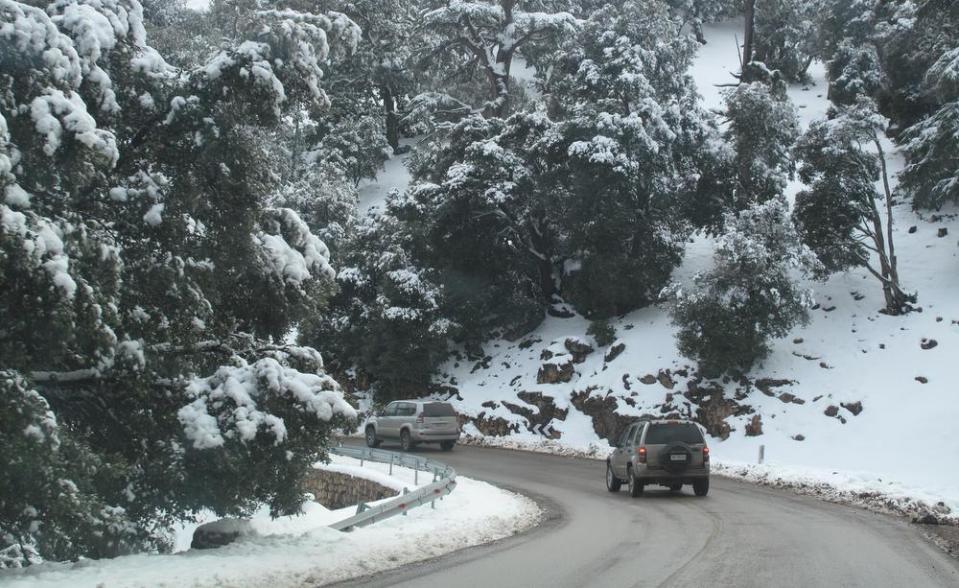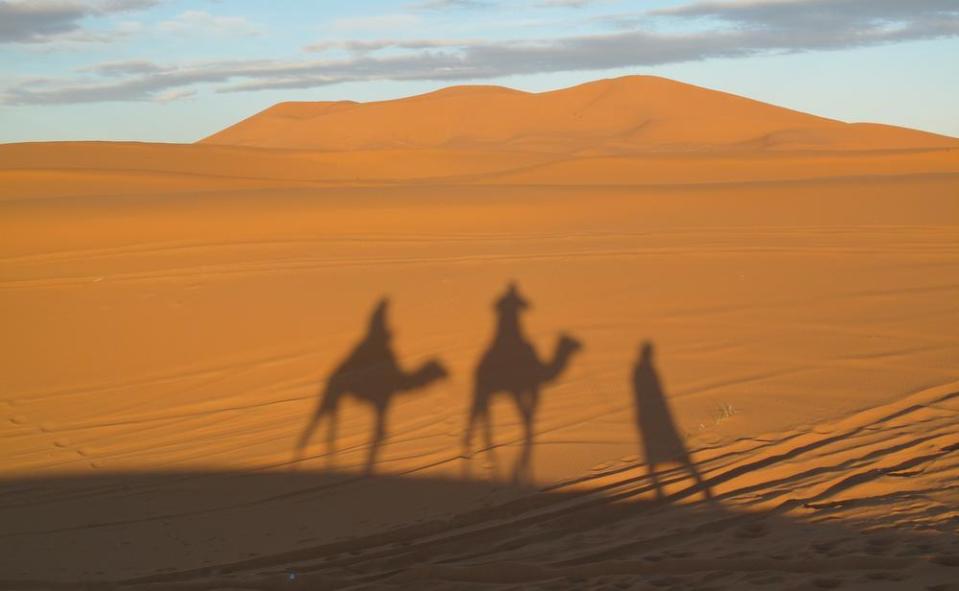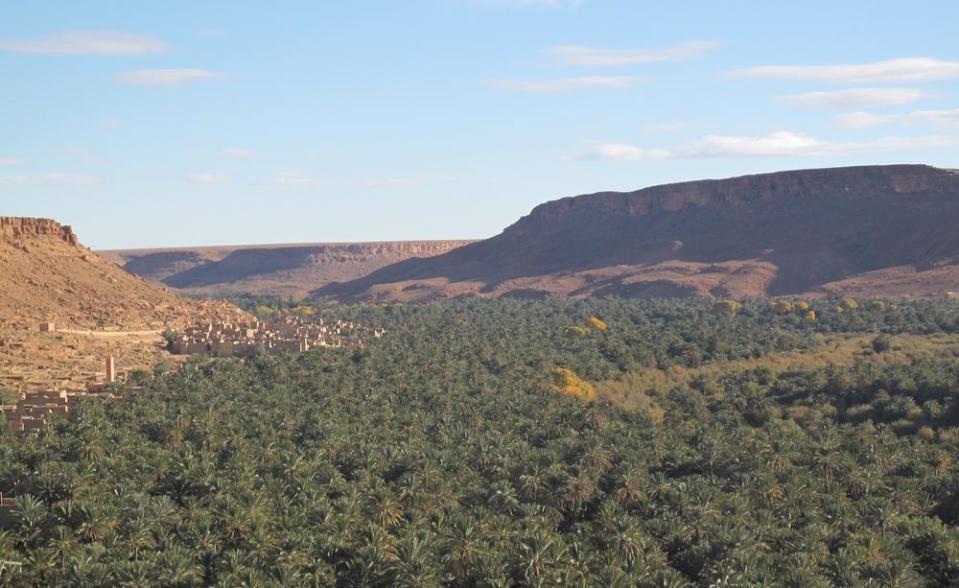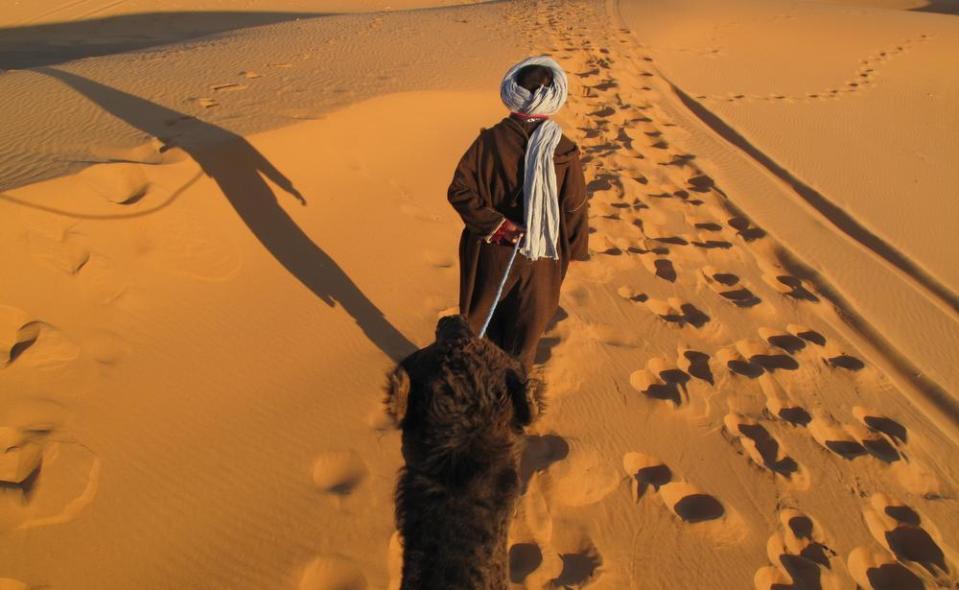Exploring Morocco’s heartland
Silly us. We thought the camel ride in the Sahara was going to be the headline adventure for this winter’s day in Morocco.
My wife Leonie and I had enjoyed a week in Fes before we jumped aboard Hassan Ouattou’s four-wheel drive for the eight-hour trip through Morocco’s heartland, a 500km journey to Merzouga on the edge of the Sahara.
We figured that the expedition would be a tedious slog through the backblocks against a backdrop of barren and inhospitable terrain. Put it down to naivety.
It was the first day of a three-day Merzouga Experience tour which we booked online. For about $900 it included all travel in Hassan’s 4WD, overnight in a typical nomad camel-hair tent in the Erg Chebbi dunes of the Sahara, two hour-long camel rides and then, over two days, the road trip to Marrakech which included a night’s stay at a fabulous 18th century kasbah run by Mustafa in the Valley of the Roses in Ait Aissa Ou Brahim. Breakfast and evening meals were included.
Anyway, less than two hours into the journey from Fes, we quickly recalibrated our original thinking as we moved up into the Middle Atlas Mountains and the snowfields of Ifrane.
Snow! It was the last thing we expected to see. Visibility was cut to 40m at times as the weather turned nasty, forcing us to wait an hour before the road over the pass was cleared. Being escorted by a snow plough through the high country certainly wasn’t on our radar at the start of the day. Nor were the wild dogs that loitered in the snow on the verge waiting for any scraps to be tossed from passing cars. Ifrane, called the Little Switzerland of Morocco, is a quaint little village with an international language school, which looks for all the world as though it has been transplanted from a faraway country, certainly not Morocco.
But as we travelled more and more though this fascinating land of open-hearted people (aside from a few carpet, ceramic and leather shop owners), we gained a small appreciation of Morocco’s diversity. Not long after we had seen the temperature gauge in Hassan’s car drop to zero, we were sitting atop a couple of camels on the edge of the Sahara tootling off to a Berber bivouac run by Hassan and his brother Muhammad, who proudly refer to themselves as people of the desert.
But after leaving the highlands and before we got to Merzouga, Leonie and I were on full alert as to what else would be rolled out before we reached our destination for the night. We weren’t disappointed. After leaving the bleak snowfields we were soon in the apple-growing country around Midelt, and not long after, we drove through massive pinkish-red canyons, not unlike what you’d see in the Kimberley.
The land flattened out dramatically after we left the canyons and cruised through Errachidia and kilometres of date palm groves before moving on to Erfoud, the hub of fossil expeditions. It was only after we left Erfoud that the strong police presence diminished though the local hitchhikers remained out in force, waiting patiently for a lift.
The hour’s delay in the Middle Atlas threatened to rob us of the camel ride to the bivouac but we arrived just in time for the camel man Omar to get us aboard a couple of trusty dromedaries. Let’s be clear here, the camel ride isn’t the stuff of a full-blown expedition, rather a slow mooch to the camp site over a few sandhills as we watched the colour of the Sahara sand darken to a deep ochre at sunset. Quite brilliant.
While the days were fine with the maximum around 20C, it got paralysingly cold after the sun set but Muhammad’s steaming hot beef tagine with vegetables, prepared in the camp kitchen, soon warmed our spirits.
During the summer months, Merzouga has arrangements for people to sleep under the stars and there is nothing quite as illuminating or uplifting as a Sahara night under a cloudless sky.
We slept in one of the three luxury camel-hair tents which come with ensuite and three players of blankets on the bed. The two-day drive to Marrakech was just as pleasurable as we passed back through the date palm plantations and paid a quick visit to the impressive Todra Gorges before reaching the Valley of Roses and our kasbah for the night.
In early May, the entire valley comes alive with pink roses which are famous in this Ouarzazate province, about six hours from Marrakech. The principal town, El Kelaa M’Gouna, is close to where Lawrence of Arabia, Gladiator and Salmon Fishing in the Yemen were all filmed.
Introduced by the French in 1938, the rose water is used for cooking, perfume and the production of soaps, lotions and oils.
The next day, to conclude three days crammed with what seemed like a week of sightseeing, we travel along the road of the 1000 kasbahs before pulling into Marrakech for a dose of Moroccan madness.





